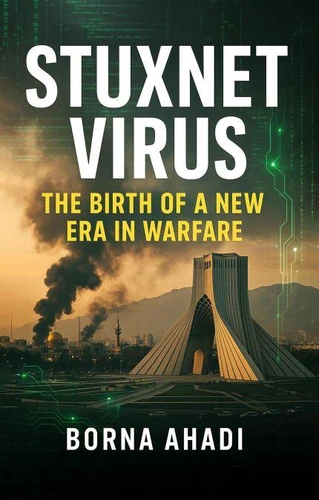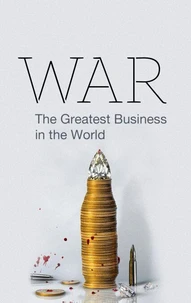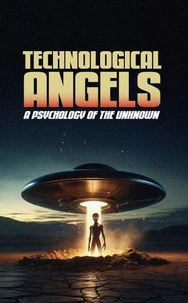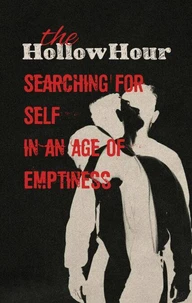Nouveauté
Stuxnet Virus: The Birth of a New Cyber World War
Par :Formats :
Disponible dans votre compte client Decitre ou Furet du Nord dès validation de votre commande. Le format ePub est :
- Compatible avec une lecture sur My Vivlio (smartphone, tablette, ordinateur)
- Compatible avec une lecture sur liseuses Vivlio
- Pour les liseuses autres que Vivlio, vous devez utiliser le logiciel Adobe Digital Edition. Non compatible avec la lecture sur les liseuses Kindle, Remarkable et Sony
 , qui est-ce ?
, qui est-ce ?Notre partenaire de plateforme de lecture numérique où vous retrouverez l'ensemble de vos ebooks gratuitement
Pour en savoir plus sur nos ebooks, consultez notre aide en ligne ici
- FormatePub
- ISBN8232427269
- EAN9798232427269
- Date de parution15/09/2025
- Protection num.pas de protection
- Infos supplémentairesepub
- ÉditeurHamza elmir
Résumé
Stuxnet Virus: The Birth of a New Cyber World War is a chilling exploration into the world's first digital weapon of mass destruction. More than just a worm, Stuxnet was a game-changer-a covert cyberattack that targeted Iran's Natanz nuclear facility, silently sabotaging its centrifuges while evading detection by even the most advanced monitoring systems. But what began as a precise, surgical strike soon morphed into a global cyber threat.
Crafted by nation-states with unprecedented sophistication, Stuxnet revealed a new reality: code can destroy infrastructure, cripple economies, and ignite global conflicts. This book dives deep into how a digital ghost designed to stay hidden became one of the most studied, reverse-engineered, and weaponized pieces of malware in history. With gripping narrative and investigative precision, the book traces Stuxnet's path from its birth in secrecy to its accidental outbreak across the internet.
It explores the vulnerabilities it exposed within air-gapped systems, the geopolitical motives behind its deployment, and the ethical quagmires of weaponizing software. It also examines how the worm influenced the next generation of cyberattacks-from Shamoon and BlackEnergy to WannaCry and NotPetya-each more destructive than the last. Drawing on expert analysis, government leaks, and cybersecurity revelations, the book also unveils the long-term consequences of the cyber arms race that Stuxnet triggered.
What began as a targeted sabotage evolved into a template for future cyberwarfare. And no nation, no corporation, no infrastructure is safe. Stuxnet Virus is not just a story about Iran or espionage-it's about how fragile our connected world has become. From nuclear reactors to power grids, from hospitals to banks, every digital node is a potential battlefield. This book is a wake-up call to the age we now live in: where wars can be fought not with bombs and tanks, but with lines of code written in silence.
If you want to understand how cyberwarfare began, why it matters, and what future conflicts may look like, this is your must-read.
Crafted by nation-states with unprecedented sophistication, Stuxnet revealed a new reality: code can destroy infrastructure, cripple economies, and ignite global conflicts. This book dives deep into how a digital ghost designed to stay hidden became one of the most studied, reverse-engineered, and weaponized pieces of malware in history. With gripping narrative and investigative precision, the book traces Stuxnet's path from its birth in secrecy to its accidental outbreak across the internet.
It explores the vulnerabilities it exposed within air-gapped systems, the geopolitical motives behind its deployment, and the ethical quagmires of weaponizing software. It also examines how the worm influenced the next generation of cyberattacks-from Shamoon and BlackEnergy to WannaCry and NotPetya-each more destructive than the last. Drawing on expert analysis, government leaks, and cybersecurity revelations, the book also unveils the long-term consequences of the cyber arms race that Stuxnet triggered.
What began as a targeted sabotage evolved into a template for future cyberwarfare. And no nation, no corporation, no infrastructure is safe. Stuxnet Virus is not just a story about Iran or espionage-it's about how fragile our connected world has become. From nuclear reactors to power grids, from hospitals to banks, every digital node is a potential battlefield. This book is a wake-up call to the age we now live in: where wars can be fought not with bombs and tanks, but with lines of code written in silence.
If you want to understand how cyberwarfare began, why it matters, and what future conflicts may look like, this is your must-read.
Stuxnet Virus: The Birth of a New Cyber World War is a chilling exploration into the world's first digital weapon of mass destruction. More than just a worm, Stuxnet was a game-changer-a covert cyberattack that targeted Iran's Natanz nuclear facility, silently sabotaging its centrifuges while evading detection by even the most advanced monitoring systems. But what began as a precise, surgical strike soon morphed into a global cyber threat.
Crafted by nation-states with unprecedented sophistication, Stuxnet revealed a new reality: code can destroy infrastructure, cripple economies, and ignite global conflicts. This book dives deep into how a digital ghost designed to stay hidden became one of the most studied, reverse-engineered, and weaponized pieces of malware in history. With gripping narrative and investigative precision, the book traces Stuxnet's path from its birth in secrecy to its accidental outbreak across the internet.
It explores the vulnerabilities it exposed within air-gapped systems, the geopolitical motives behind its deployment, and the ethical quagmires of weaponizing software. It also examines how the worm influenced the next generation of cyberattacks-from Shamoon and BlackEnergy to WannaCry and NotPetya-each more destructive than the last. Drawing on expert analysis, government leaks, and cybersecurity revelations, the book also unveils the long-term consequences of the cyber arms race that Stuxnet triggered.
What began as a targeted sabotage evolved into a template for future cyberwarfare. And no nation, no corporation, no infrastructure is safe. Stuxnet Virus is not just a story about Iran or espionage-it's about how fragile our connected world has become. From nuclear reactors to power grids, from hospitals to banks, every digital node is a potential battlefield. This book is a wake-up call to the age we now live in: where wars can be fought not with bombs and tanks, but with lines of code written in silence.
If you want to understand how cyberwarfare began, why it matters, and what future conflicts may look like, this is your must-read.
Crafted by nation-states with unprecedented sophistication, Stuxnet revealed a new reality: code can destroy infrastructure, cripple economies, and ignite global conflicts. This book dives deep into how a digital ghost designed to stay hidden became one of the most studied, reverse-engineered, and weaponized pieces of malware in history. With gripping narrative and investigative precision, the book traces Stuxnet's path from its birth in secrecy to its accidental outbreak across the internet.
It explores the vulnerabilities it exposed within air-gapped systems, the geopolitical motives behind its deployment, and the ethical quagmires of weaponizing software. It also examines how the worm influenced the next generation of cyberattacks-from Shamoon and BlackEnergy to WannaCry and NotPetya-each more destructive than the last. Drawing on expert analysis, government leaks, and cybersecurity revelations, the book also unveils the long-term consequences of the cyber arms race that Stuxnet triggered.
What began as a targeted sabotage evolved into a template for future cyberwarfare. And no nation, no corporation, no infrastructure is safe. Stuxnet Virus is not just a story about Iran or espionage-it's about how fragile our connected world has become. From nuclear reactors to power grids, from hospitals to banks, every digital node is a potential battlefield. This book is a wake-up call to the age we now live in: where wars can be fought not with bombs and tanks, but with lines of code written in silence.
If you want to understand how cyberwarfare began, why it matters, and what future conflicts may look like, this is your must-read.






















